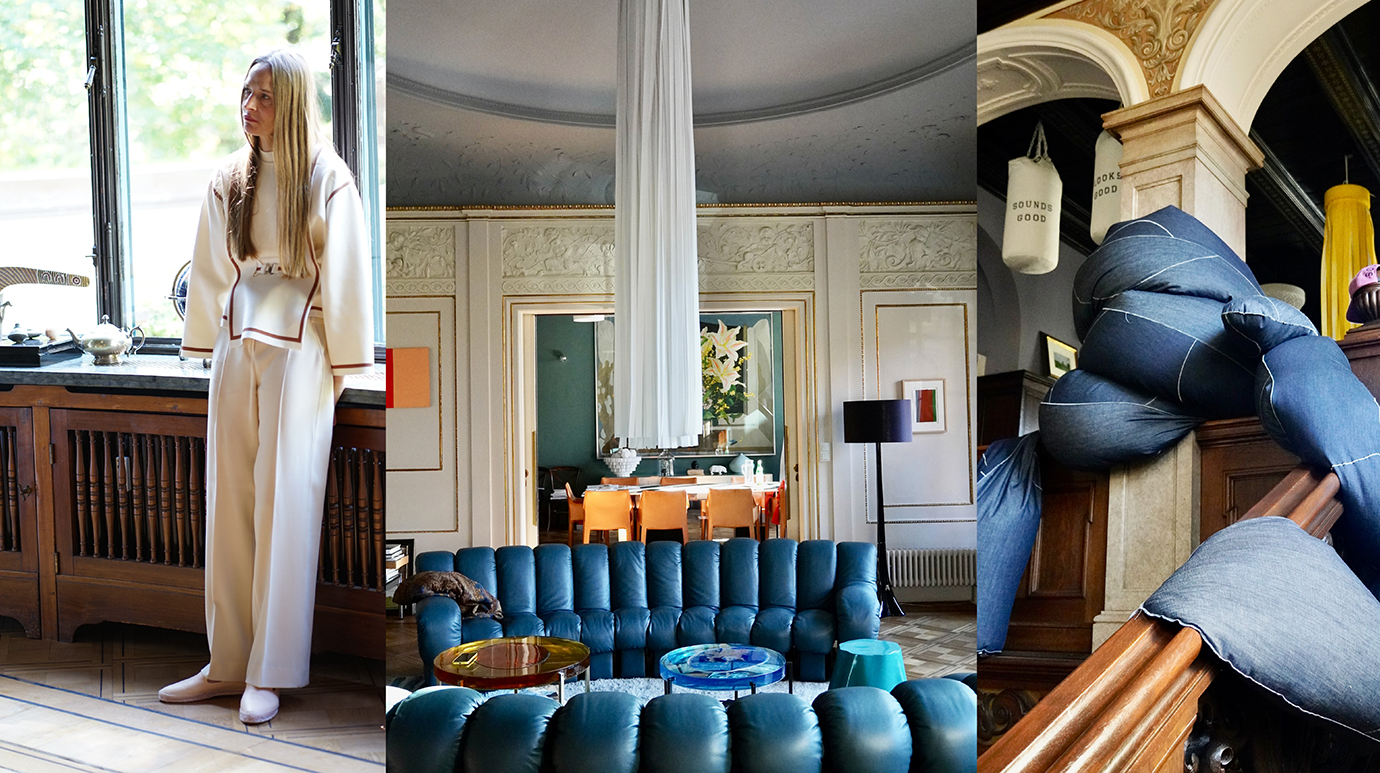We recently met Marie Aigner for the second time at her showroom in the historic Diesel Villa in Munich’s Bogenhausen district, which she calls home and uses as her creative hub. We first met her in 2021 when we did a story for Madame Magazine in Munich about Marie’s work. Since then, her work has developed in many ways.

Marie Aigner has long stood at the intersection of architecture, design innovation, and environmental responsibility. Her Acoustic Products collection transcends the conventional understanding of sound-absorbing materials, positioning acoustics not as a hidden technical necessity but as a sculptural and sustainable design statement. Produced locally and crafted from recycled materials, her creations balance visual presence with acoustic performance. In an age where work, living, and public spaces increasingly merge, Aigner’s designs respond to a growing desire for calm—without ever compromising on character.

When asked about the origins of her Acoustic Products collection, Aigner recalls a distinct gap in the market: “There was nothing available that convinced me to use it, although I saw the need for acoustic solutions—and also a growing market, since this is a health issue and people have increasingly been focusing on personal well-being.”
Unlike conventional acoustic designs, which often fade discreetly into the background, Aigner chose to make sound-absorbing elements visually compelling. “Well observed,” she says. “The existing products had a technical effect but were poorly designed and usable only on walls or ceilings—very static and inflexible compared to a sound wave, which moves freely through space.”

Sustainability, a defining principle of Aigner’s practice, runs deep through both her creative and production processes. “In the creative process, sustainability means creating spaces or objects whose quality will stand the test of time,” she explains. “When it comes to production, I look for local materials and local manufacturing. For acoustic objects, it’s more challenging to find recycled PET of sufficient quality and companies capable of processing it. However, I source both exclusively in Germany, accepting higher manufacturing costs in exchange for lower emissions. We also keep our stock levels low to avoid wasting materials unnecessarily.”

Aigner’s understanding of materiality, space, and sound is both intuitive and technical. “The room, the materials used, and noise interact in a way that’s amplified by the type of use, but this is rarely acknowledged,” she notes. “There’s a preference for creating sound-reflective rooms made of concrete and glass, filling them with open-plan offices, and then installing ceiling absorbers as an afterthought. It would be far better to integrate acoustics at the planning stage.”

Among her current designs, Aigner highlights Karl Kaktus as the piece that most clearly encapsulates her philosophy. “It was designed with size efficiency in mind, ensuring minimal waste during production,” she says. “Thanks to its plug-in technology, it’s also a very effective absorber—even though it appears fragile and lightweight. It’s easy to assemble and disassemble, making it mobile and flexible in use. We even use it as a coat rack.”

With her distinctive combination of architectural precision, environmental awareness, and sculptural sensitivity, Marie Aigner continues to redefine what acoustic design can be—quietly, yet powerfully.



